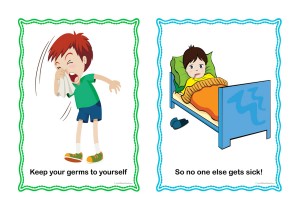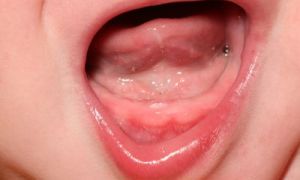Influenza, commonly known as the flu, is caused by a highly contagious virus that is spread by fluids produced during coughing and sneezing, or by direct contact with those fluids on surfaces.
Causes of flu
The flu is caused by a highly contagious virus that is spread by fluids produced during coughing and sneezing, or by direct contact with those fluids on surfaces. People who work with or live in close contact with people who have an underlying medical condition or reduced immunity should be immunised to minimise the spread of the flu to themselves, the people they work or live with and their families. Such people include:
- public and private hospital staff who provide direct care to people/staff in long term care facilities or nursing homes
- people who live with, or care for someone who has a chronic illness or is aged 65 years or older
- carers of homeless people
Other people who are recommended to be vaccinated include:
- workers, particularly those in workplaces that provide essential services
- people who work with children
- people involved in the commercial poultry and pig industries (as viruses can emerge from poultry and pigs)
- anyone travelling as part of a group
Highrisk groups
People with an underlying medical condition or reduced immunity are most at risk of catching the flu and of having complications from the flu. They include:
- anyone aged 65 years and older
- children under five years
- pregnant women (at any stage of pregnancy)
- Aboriginal and Torres Strait Islander people aged 15 years and over
- People aged six months or older with heart disease, chronic lung disease (such as asthma or emphysema), chronic neurological conditions, Down syndrome, impaired
- immunity or haemoglobinopathies (blood disorders caused by genetic changes)
- people with chronic conditions such as obesity, diabetes, alcoholism and kidney disease
- residents in nursing homes or other longterm care facilities
- people who are homeless
- people with severe asthma who require frequent hospital visits
- children on longterm aspirin therapy
- other chronic illnesses requiring regular medical followup or hospitalisation.
Symptoms of flu
Flu symptoms develop one to three days after infection and include:
- high fever, chills and sweating
- sore throat
- runny or stuffed nose
- weakness
- headache
- general muscle and joint pains (in the legs and back)
- a non-productive (dry) cough that can later become more severe and productive (sputum or mucous is coughed up).
Flu is not the common cold. The flu is more severe than a bad cold because:
- Cold symptoms last from two to a few days, whereas the flu can last up to a week.
- The flu causes a high fever, whereas a cold sometimes causes only a mild fever.
- Muscular pains and shivering attacks occur with the flu, but not with a cold.
- Colds cause a runny nose, while the flu usually starts with a dry sensation in the nose and throat.
- Flu symptoms come on quickly whereas colds develop more gradually
Complications from flu
Complications are more common among people with an underlying medical condition or an impaired immune system. Flu can increase the risk of death or the risk of serious complications from the underlying disease. In a small proportion of cases, flu will lead to:
- Primary influenza pneumonia – symptoms include difficulty with breathing and blue discolouration of the skin (cyanosis).
- Secondary bacterial pneumonia – occurs when bacteria invade the lungs. Symptoms include shortness of breath, green or yellow phlegm (mucous), chest pains and a temperature. Death rates are high, but it is less lethal than primary influenza pneumonia.
- Inflammation of the brain or heart – can occur during recovery from the flu.
- Reye’s syndrome – this leads to brain inflammation and liver degeneration and is fatal in between 10 and 40 per cent of cases. Children under 16 years should not be given any medication containing aspirin as it increases the risk of Reye’s syndrome.
Treatment of flu
There are now specific antiviral medications available, but they need to be given early in the illness and might only reduce the symptoms rather than prevent them. These medications are not substitutes for immunisation, which is the primary way to control influenza. The recommended treatment for mild or moderate flu is to:
- Stay in bed and rest until your body temperature has been in the normal range for 48 hours.
- Drink enough fluids to maintain normal urine output.
- Take paracetamol to control fever, aches and pains (adults can use aspirin). Early use of antiviral medication may shorten the length and severity of illness. Discuss treatment with your doctor.
- Avoid exposure to dust, alcohol, fumes and tobacco smoke as much as possible.
It is important to take these steps and look after yourself or your family member to avoid serious complications, such as pneumonia. Consult your doctor if you develop further symptoms such as difficulty in breathing, coughing up green or yellow phlegm (mucous) or severe headache.
Other ways to avoid the spread of the flu
Although annual immunisation is the best way to avoid spreading the flu, another effective way to protect ourselves and others from illness is good personal hygiene. Some of the principles of good personal hygiene include:
- Cover your nose and mouth with a tissue when you cough or sneeze.
- Throw your tissue in a plastic lined rubbish bin after use.
- Wash your hands with soap and water, and if water is unavailable use an alcohol based hand cleaner after you cough or sneeze.
- Avoid touching your eyes, nose or mouth as germs spread that way.
- Don’t go to work if you are unwell and don’t send your children to school or childcare if they are unwell.
The National Health and Medical Research Council suggests that the recommended exclusion period for a child that has contracted Influenza from childcare is until the child is well again and symptoms have stopped.
Disclaimer: This fact sheet is for education purposes only. Please consult with your doctor or other health professional to make sure this information is right for your child.
Copyight © 1999/2015 State of Victoria. Reproduced from the Better Health Channel










